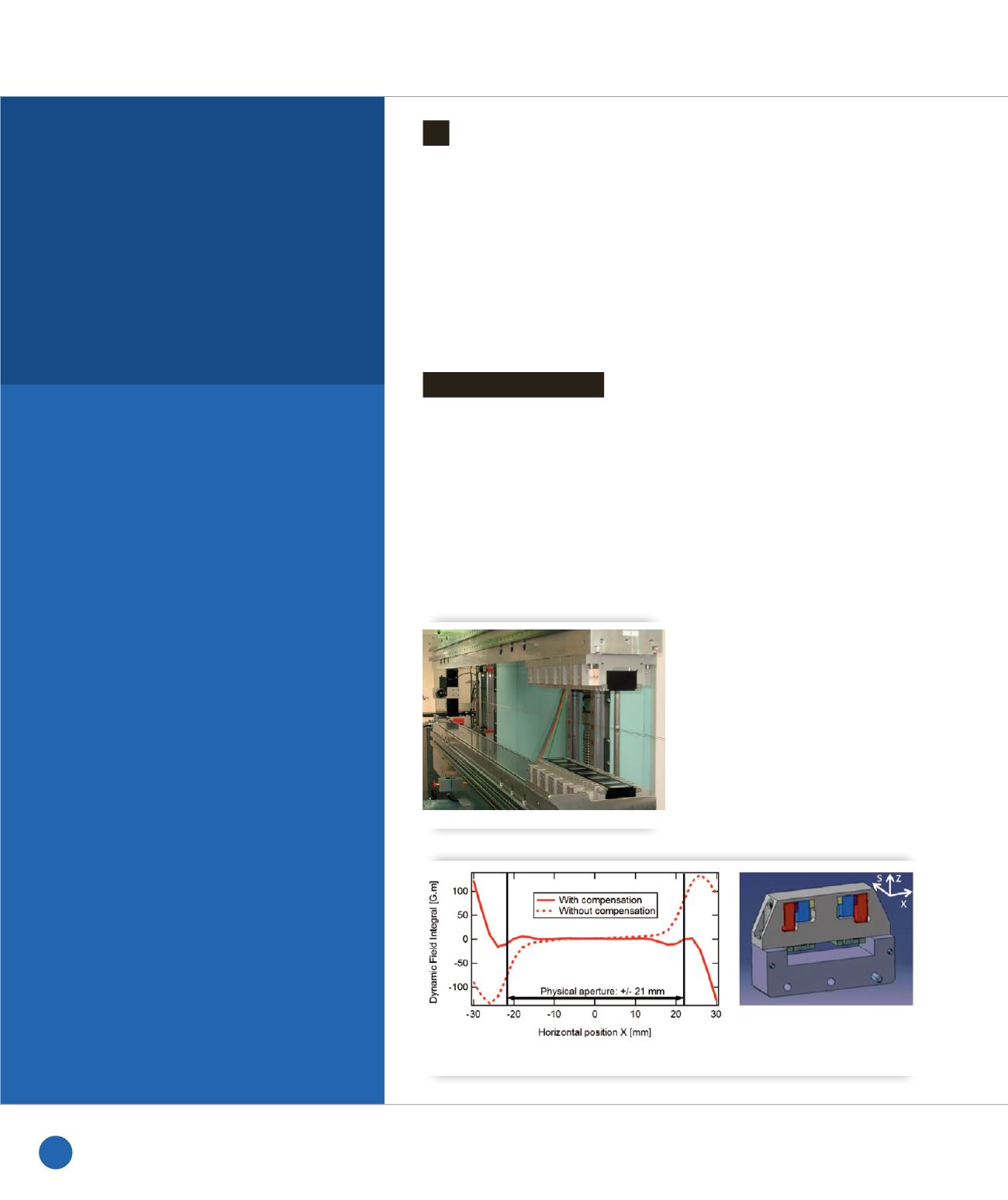
W164: one insertion device
for two purposes
An out-vacuum wiggler, W164, was
designed, built and installed on the
SOLEIL storage ring with the double
objective to produce high energy photons
for the PUMA beamline (10 keV to 70 keV)
and to be used as a modulator for the
FEMTOSLICING project [1]. The insertion
device requires simultaneously reaching
high critical energy of photons (above 10
keV) and low resonant energy (1.55 eV).
The wiggler is composed of 20 periods
of 164.4 mm made of NdFeB magnets and
Vanadium Permendur poles. The maximum
total field reaches 1.85 T at the minimum
gap and 1.66 T at the FEMTOSLICING
operation gap. The size of the poles,
the carriage and the girders were optimized
to minimize the deformation resulting
from the magnetic forces (8 tons at
minimum gap).
The SOLEIL FEMTOSLICING [2] is a multi–
user project focused on the production of
ultra-short photon pulses (~100 fs). It is
based on the exchange of energy resulting
from the interaction inside a wiggler
(“modulator”) of electron bunches and
an external short pulse laser. The wiggler
resonant wavelength matches the 800
nm laser wavelength (in fact the energy
exchange is optimum when the wiggler
operates at 780 nm). The other specificity
of the SOLEIL modulator is that it is also
used as a high energy photon source (10
keV to 70 keV) for the PUMA beamline [3].
The construction of W164 gathers thus
two goals. The first is to reach low photon
energy which is not the predilection
spectral range of medium/high energy
storage rings such as SOLEIL. The second
is to operate the modulator at high critical
energy. Both constraints require building a
wiggler with high field and large period.
Magnetic design
The magnetic system is composed of
20 periods of 164.4 mm generating a
maximum field of 1.85 T at a minimum
gap of 14.5 mm. Each period consists of
NdFeB permanent magnets and Vanadium
Permendur poles assembled on aluminum
holders and mounted on two aluminum
beams (Fig.
➊
). The magnetic field is
changed by moving the gap between the
beams from 14.5 mm to 240. Particular
care has been taken in the design of the
carriage to avoid excessive deformations
which result from high magnetic forces
between magnet arrays (up to 8 tons).
Thanks to the stiffness of the girders (300
mm), the rigidity of the frame and the
small transverse size of the poles (50 mm),
their planarity and parallelism remain
within 0.1 mm under load.
However, the small transverse size of the
poles impacts strongly the transverse
homogeneity of the magnetic field and
generates an off-axis strong field integral
(“Dynamic field integral”) [4] which could
be responsible for nasty effects on the
beam dynamics.
Compensation system
Four dedicated compensation systems
were designed and built at SOLEIL to
reduce the off-axis dynamic field integral
(Fig.
➋
, left). Each of them is composed
of four vertically polarized permanent
magnets mounted in an aluminum box
(Fig.
➋
, right).
Description of W164
➊
W164 during assembling.
➋
Calculated reduction of the dynamic field integral (Left) resulting from the effect of the compensation system
(Right) at minimum gap (14.5 mm).
SOURCES AND ACCELERATORS DIVISION
138
SOLEIL
HIGHLIGHTS
2013


